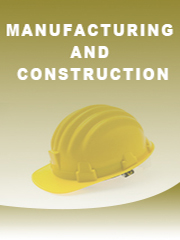Report overview
A low temperature sensor is a device that can detect when the ambient temperature in the area of the sensor drops below a normal threshold that can be fixed or variable ? meaning you can set that temperature.The low temperature sensors industry can be broken down into several segments,negative temperature coefficient (NTC),resistance temperature detectors (RTD),thermocouple sensor,others,etc.Across the world,the major players cover lake shore cryotronics,capgo,omega,cryogenic control systems,inc.(Cryo-con),scientific instruments,amphenol corporation,chino,Ist,sensaphone,heraeus, etc.
This report aims to provide a comprehensive presentation of the global market for Low Temperature Sensor, with both quantitative and qualitative analysis, to help readers develop business/growth strategies, assess the market competitive situation, analyze their position in the current marketplace, and make informed business decisions regarding Low Temperature Sensor. This report contains market size and forecasts of Low Temperature Sensor in global, including the following market information:
Global Low Temperature Sensor Market Revenue, 2018-2023, 2024-2029, ($ millions)
Global Low Temperature Sensor Market Sales, 2018-2023, 2024-2029, (K Unit)
Global top five Low Temperature Sensor companies in 2022 (%)
The global Low Temperature Sensor market was valued at US$ 241.6 million in 2022 and is projected to reach US$ 339.9 million by 2029, at a CAGR of 5.0% during the forecast period. The influence of COVID-19 and the Russia-Ukraine War were considered while estimating market sizes.
The major players cover IST, Heraeus and Amphenol Corporation. Asia-Pacific has the largest low temperature sensor market , occupied for about 35%, followed by North America. In terms of type, resistance temperature detectors (RTD) is the largest segment, with a share of over6.5%. And in terms of application, Industrial segment holds a share of about 6%.
We surveyed the Low Temperature Sensor manufacturers, suppliers, distributors and industry experts on this industry, involving the sales, revenue, demand, price change, product type, recent development and plan, industry trends, drivers, challenges, obstacles, and potential risks.
Total Market by Segment:
Global Low Temperature Sensor Market, by Type, 2018-2023, 2024-2029 ($ Millions) & (K Unit)
Global Low Temperature Sensor Market Segment Percentages, by Type, 2022 (%)
Negative Temperature Coefficient (NTC)
Resistance Temperature Detectors (RTD)
Thermocouple Sensor
Others
Global Low Temperature Sensor Market, by Application, 2018-2023, 2024-2029 ($ Millions) & (K Unit)
Global Low Temperature Sensor Market Segment Percentages, by Application, 2022 (%)
Industrial
Aerospace
Research
Others
Global Low Temperature Sensor Market, By Region and Country, 2018-2023, 2024-2029 ($ Millions) & (K Unit)
Global Low Temperature Sensor Market Segment Percentages, By Region and Country, 2022 (%)
North America
US
Canada
Mexico
Europe
Germany
France
U.K.
Italy
Russia
Nordic Countries
Benelux
Rest of Europe
Asia
China
Japan
South Korea
Southeast Asia
India
Rest of Asia
South America
Brazil
Argentina
Rest of South America
Middle East & Africa
Turkey
Israel
Saudi Arabia
UAE
Rest of Middle East & Africa
Competitor Analysis
The report also provides analysis of leading market participants including:
Key companies Low Temperature Sensor revenues in global market, 2018-2023 (Estimated), ($ millions)
Key companies Low Temperature Sensor revenues share in global market, 2022 (%)
Key companies Low Temperature Sensor sales in global market, 2018-2023 (Estimated), (K Unit)
Key companies Low Temperature Sensor sales share in global market, 2022 (%)
Further, the report presents profiles of competitors in the market, key players include:
IST
Heraeus
Amphenol Corporation
OMEGA
Chino
Lake Shore Cryotronics
Senstech
Scientific Instruments
Variohm Eurosensor
Cryogenic Control Systems, Inc.
Outline of Major Chapters:
Chapter 1: Introduces the definition of Low Temperature Sensor, market overview.
Chapter 2: Global Low Temperature Sensor market size in revenue and volume.
Chapter 3: Detailed analysis of Low Temperature Sensor manufacturers competitive landscape, price, sales and revenue market share, latest development plan, merger, and acquisition information, etc.
Chapter 4: Provides the analysis of various market segments by type, covering the market size and development potential of each market segment, to help readers find the blue ocean market in different market segments.
Chapter 5: Provides the analysis of various market segments by application, covering the market size and development potential of each market segment, to help readers find the blue ocean market in different downstream markets.
Chapter 6: Sales of Low Temperature Sensor in regional level and country level. It provides a quantitative analysis of the market size and development potential of each region and its main countries and introduces the market development, future development prospects, market space of each country in the world.
Chapter 7: Provides profiles of key players, introducing the basic situation of the main companies in the market in detail, including product sales, revenue, price, gross margin, product introduction, recent development, etc.
Chapter 8: Global Low Temperature Sensor capacity by region & country.
Chapter 9: Introduces the market dynamics, latest developments of the market, the driving factors and restrictive factors of the market, the challenges and risks faced by manufacturers in the industry, and the analysis of relevant policies in the industry.
Chapter 10: Analysis of industrial chain, including the upstream and downstream of the industry.
Chapter 11: The main points and conclusions of the report.
